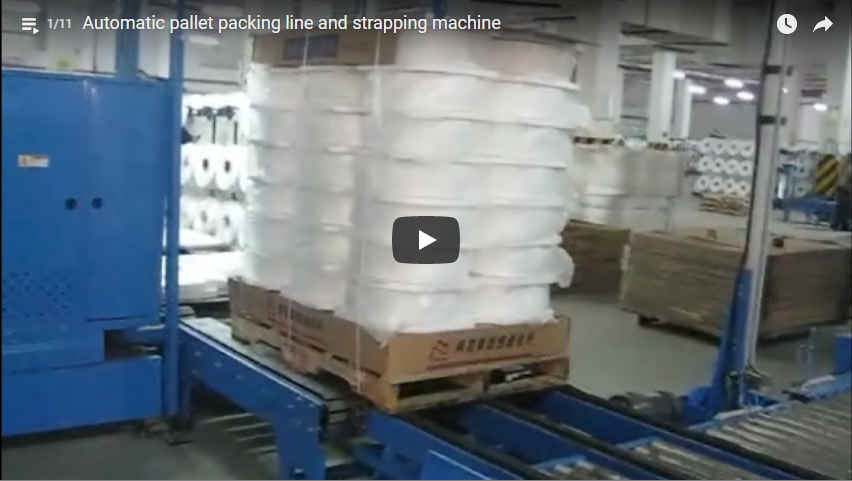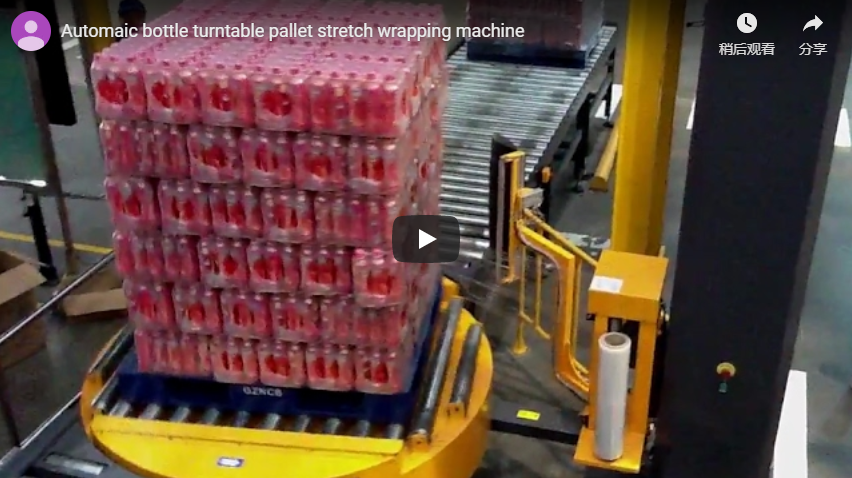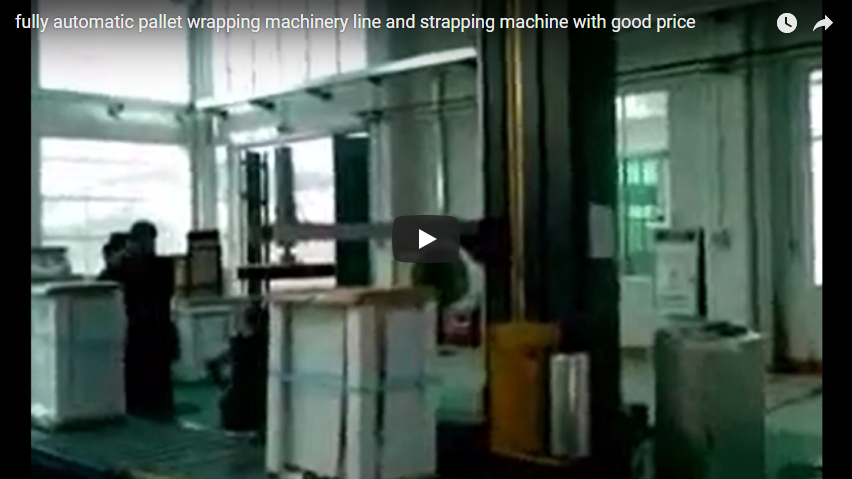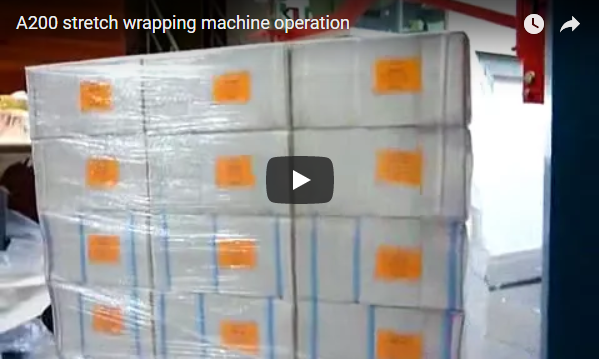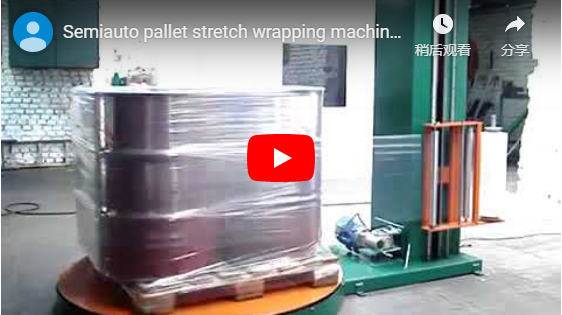In today's fast-paced warehousing and distribution environments, efficient and secure palletizing is paramount. The automatic pallet wrapper, a cornerstone of modern end-of-line packaging systems, offers a robust solution for stabilizing loads, protecting goods, and optimizing operational workflow. This machine automates the application of stretch film around loaded pallets, ensuring consistent containment force and safeguarding products against dust, moisture, and transit-related damage. This article delves into the technical specifics, design considerations, and operational advantages of automatic pallet wrapping technology.
1. Operational Principle and Core Functionality
At its core, an automatic pallet wrapper utilizes a coordinated system to unitize pallet loads effectively. The process typically involves:
- Pallet Placement: The loaded pallet is positioned onto the machine's turntable or within the wrapping zone.
- Film Attachment: The machine automatically attaches the leading edge of the stretch film to the pallet load.
- Wrapping Cycle: The turntable rotates the pallet (in turntable models) or a rotary arm circles the stationary pallet (in rotary arm models). Simultaneously, a film carriage assembly moves vertically along a mast, dispensing the stretch film in a pre-programmed pattern (e.g., spiral up/down wraps, top/bottom reinforcement wraps).
- Film Tensioning & Pre-Stretch: A crucial element is the film delivery system, often incorporating powered pre-stretch rollers. These rollers stretch the film before it's applied to the load (commonly between 150% to 300%), maximizing film yield and ensuring optimal load containment force with minimal material consumption.
- Film Cut and Seal: Upon cycle completion, the film is automatically cut and sealed (e.g., via a heat or wipe-down mechanism) to the load, leaving the pallet ready for removal.
2. Key Design Features and Structural Components
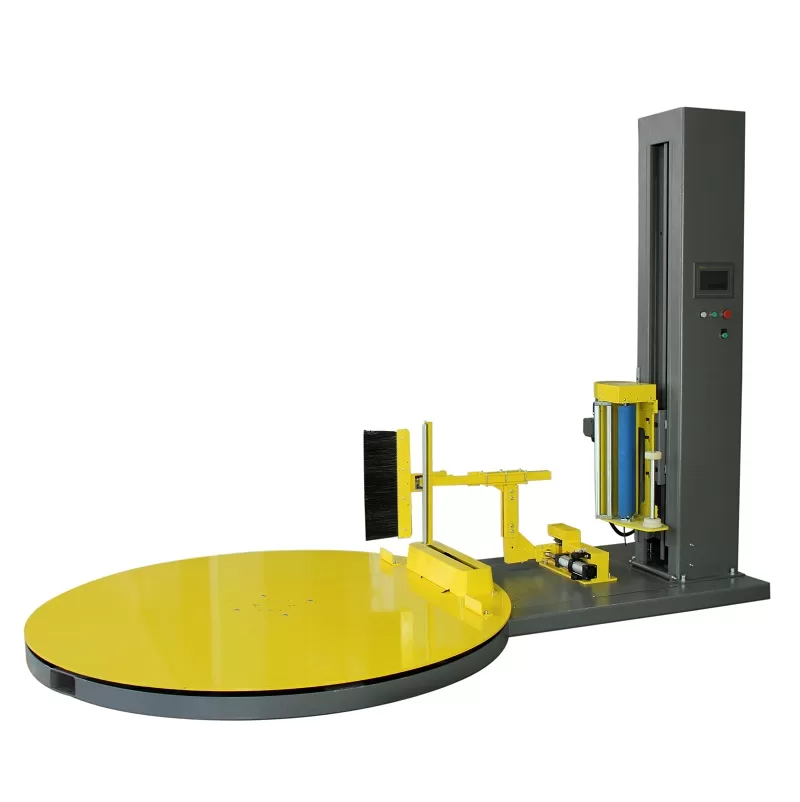
A reliable automatic pallet wrapper is built from several key components, designed for durability and consistent performance in industrial settings:
- Heavy-Duty Frame: Typically constructed from welded steel for structural integrity and longevity, capable of handling demanding throughput.
- Turntable Assembly (Turntable Models): Features a robust steel platform, often with a defined weight capacity, driven by a reliable motor and chain or direct drive system for smooth, controlled rotation.
- Rotary Arm Assembly (Rotary Arm Models): Consists of an overhead arm that rotates around a stationary load, suitable for very heavy, light, or unstable loads that cannot be easily rotated.
- Film Carriage: Houses the film roll and the pre-stretch mechanism. Precision bearings and sensors ensure consistent film feed and tension control.
- Mast: The vertical structure guiding the film carriage's movement, determining the maximum wrapping height.
- Control System: Typically incorporates a Programmable Logic Controller (PLC) for reliable automation and an Human-Machine Interface (HMI) touchscreen panel. The HMI allows operators to select wrap programs, adjust parameters (e.g., rotation speed, number of top/bottom wraps, film tension), and monitor machine status or diagnostics.
- Sensors: Photo-eyes detect pallet height for automatic cycle adjustment, while safety sensors (e.g., under-carriage obstruction sensors, safety bumpers) ensure operator protection.
3. Technical Specifications Deep Dive
While specific parameters vary significantly based on the model and configuration, here are typical specifications for a standard automatic turntable pallet wrapper. (Note: These are representative figures. For exact specifications matching the equipment shown or tailored to your needs, please contact Fhopepack.)
- Machine Type: Automatic Turntable Pallet Wrapping Machine
- Typical Cycle Time: 20-40 seconds per pallet (excluding conveyor time)
- Film Delivery System: Powered Pre-stretch, commonly adjustable up to 250% (Higher options available, maximizing film economy)
- Maximum Load Weight: Often 2000kg (approx. 4400 lbs), higher capacities available
- Turntable Speed: Variable, typically up to 12-15 RPM
- Film Width Compatibility: Standard 500mm (approx. 20 inches)
- Maximum Wrap Height: Standard 2100mm (approx. 82 inches), taller masts available
- Power Requirement: Commonly 220V/380V, 50/60Hz, 3-Phase (verify based on region/model)
- Machine Weight: Approx. 900kg - 1500kg depending on features
- Operational Control: PLC with Touchscreen HMI
Technical Data Comparison: Key Performance Indicators
| Feature | Typical Range | Importance |
|---|---|---|
| Pre-stretch Ratio | 150% - 300%+ | Higher ratio = more film savings, better tension |
| Turntable Speed | 10 - 15 RPM | Directly impacts cycle time/throughput |
| Max Load Weight | 1500kg - 2500kg+ | Must match application load requirements |
| Max Wrap Height | 2000mm - 3000mm+ | Must accommodate tallest pallet loads |
| Control System | PLC + HMI | Ensures reliability, flexibility, diagnostics |
| Film Cut/Seal Mech. | Auto Cut & Wipe/Heat | Reduces manual intervention, improves speed |
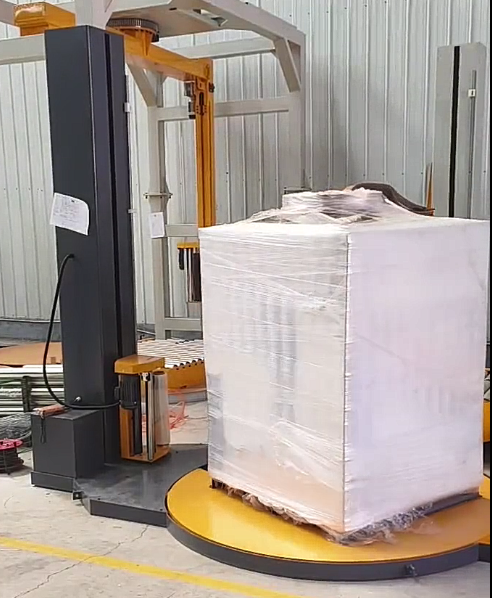
4. Performance Metrics and ROI Considerations
Investing in an automatic pallet wrapper yields tangible benefits:
- Increased Throughput: Significantly faster than manual or semi-automatic methods, handling dozens to hundreds of pallets per shift.
- Reduced Film Costs: Powered pre-stretch systems can reduce film consumption by 50% or more compared to hand wrapping.
- Improved Load Security: Consistent wrap patterns and tension control minimize product shifting and damage during transit, reducing costly returns.
- Labor Savings: Frees up personnel for other value-added tasks, reducing direct labor costs associated with wrapping.
- Enhanced Safety: Automates a physically demanding task, reducing risks of back injuries and repetitive strain.
The Return on Investment (ROI) is often realized quickly through savings in labor, film, and reduced product damage.
5. Application Spotlight: Where Automatic Wrappers Excel
Automatic pallet wrappers are indispensable in various industries:
- Logistics and Distribution Centers: Essential for high-volume operations preparing diverse goods for shipment. Automation ensures consistency and speed in cross-docking, order fulfillment, and outbound staging.
- Chemical Manufacturing Plants: Provides secure containment for drums, sacks, and IBCs, minimizing spill risks and protecting chemical integrity from environmental factors during handling and storage.
- Food and Beverage Factories: Crucial for maintaining hygiene standards by securely wrapping pallets of finished goods (bottles, cans, boxes, bags), protecting them from contamination and ensuring stability for refrigerated or ambient transport. Meets stringent food safety requirements.
- General Manufacturing: Widely used across industries (automotive, electronics, construction materials, paper products) to unitize finished goods, components, or raw materials efficiently and safely.
6. User Experience and Maintenance Insights
Modern automatic pallet wrappers are designed with user-friendliness in mind:
- Intuitive HMI: Touchscreen controls allow for easy program selection, parameter adjustments, and troubleshooting with clear prompts and diagnostic information.
- Easy Film Loading: Features like ergonomic, often low-level or side-mounted film carriages simplify roll changes.
- Reliability: Robust construction and quality components lead to high uptime.
- Maintenance: Routine maintenance typically involves lubrication of moving parts (turntable bearings, chains), sensor cleaning, and inspection of wear items (e.g., pre-stretch rollers, cutting blades). PLCs offer diagnostic capabilities to speed up troubleshooting.
Conclusion
The automatic pallet wrapper is a critical asset for any operation looking to enhance packaging efficiency, improve load security, and reduce operational costs. By automating the stretch wrapping process with precise control over film tension and application patterns, these machines deliver consistent results, protect valuable goods, and contribute significantly to a streamlined logistics workflow. Selecting the right machine involves careful consideration of load types, throughput requirements, and desired levels of automation.
For detailed specifications tailored to your specific application or to discuss the machine featured in the video, please contact us.
www.fhopepack.com
info@fhopepack.com

